Earth is around 4.5 billion years old. Almost everything from that time has been destroyed. Humans have only existed for a fraction of that time, so the most ancient things on the planet are not related to people. Let’s discover 7 of the oldest things on Earth now.
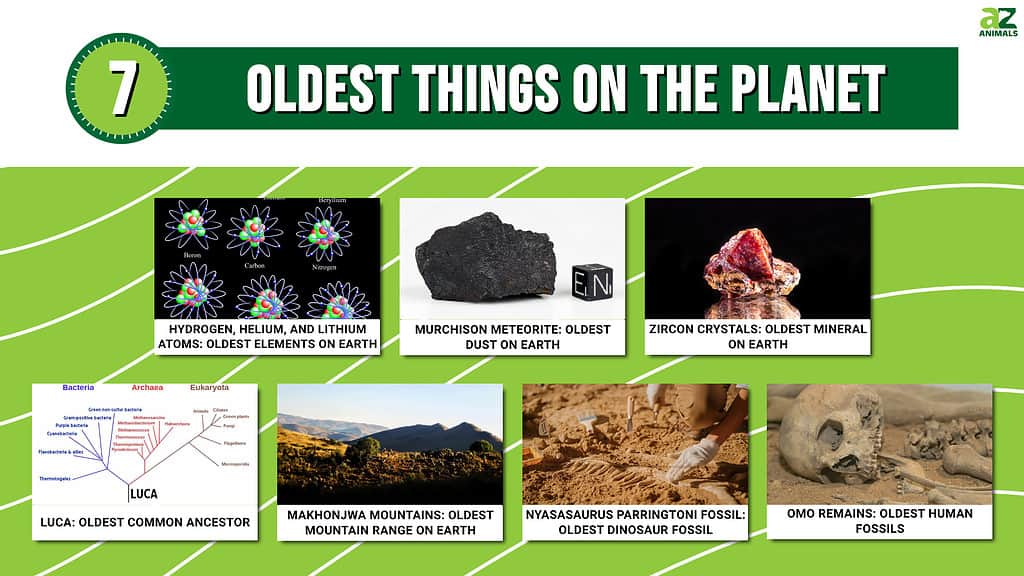
The 7 Oldest Things on the Planet
While it’s impossible to list every oldest thing on the planet in order, we’ve selected 7 of the most important oldest things.
These are 7 of the oldest things on Earth:
- Hydrogen, Helium, and Lithium Atoms
- Murchison Meteorite
- Zircon Crystals
- LUCA
- Makhonjwa Mountains
- Nyasasaurus Parringtoni
- Omo Remains
7. Omo Remains: Oldest Human Fossils
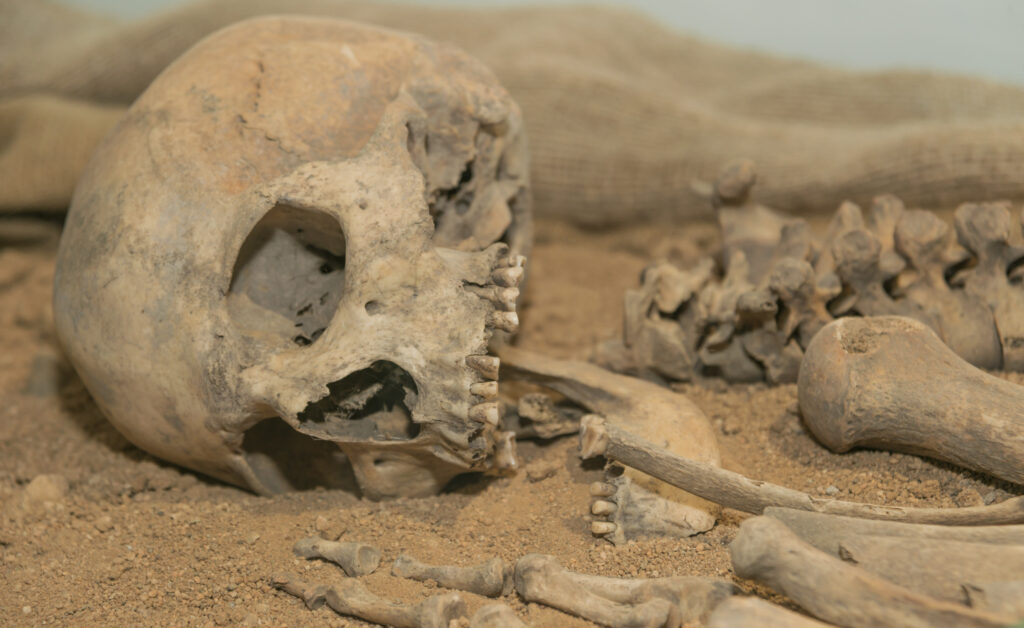
Human remains have been found many places throughout the world.
©GAS-photo/Shutterstock.com
The Omo remains are the oldest human — or Homo sapien — fossils. They were discovered in Ethiopia at the Omo-Kibish archaeological sites in the 1960s. These remains are around 233,000 years old and originate from the Middle Pleistocene.
Hundreds of teeth, parts of 2 skulls, a legbone, and four different jaws were recovered from the site. The first Homo sapiens appeared on the planet about 300,000 years ago.
Previous studies of the bone showed that these bones were about 190,000 years old. However, a recent analysis of the volcanic ash around the remains shows that the bones are much older than that. The idea is that the bones can’t be older than a sediment layer that settled on top of them.
6. Nyasasaurus Parringtoni Fossil: Oldest Dinosaur Fossil
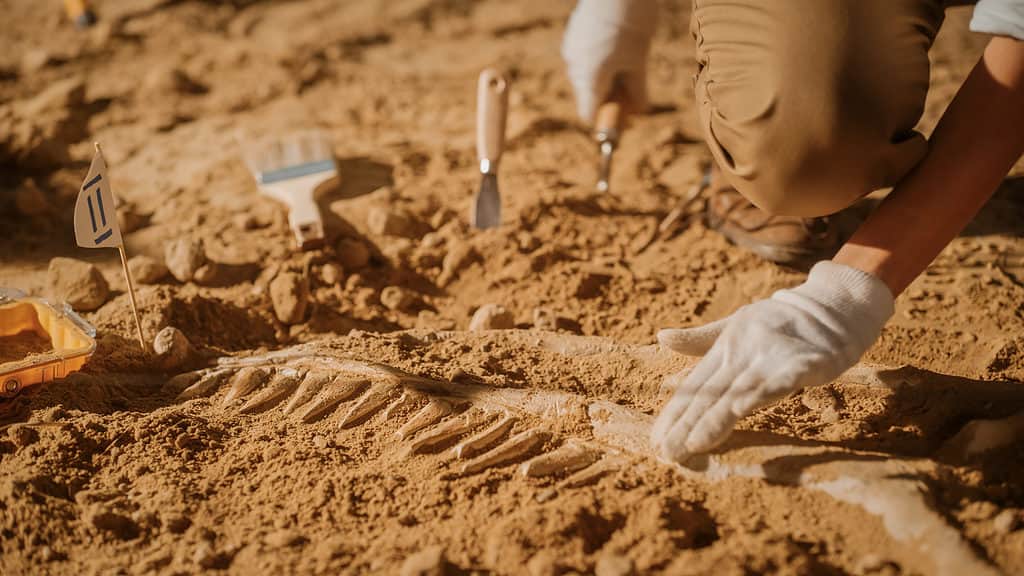
Dinosaur fossils are some of the oldest things on the Earth!
©iStock.com/gorodenkoff
While there are many dinosaur fossils, Nyasasaurus Parringtoni is one of the oldest things on Earth and is commonly believed to be the oldest dinosaur ever discovered. Found in Tanzania, this dinosaur most likely died on the Pangean continent. It is from the Triassic Period, around 243 million years ago.
The age of Nyasasaurus Parringtoni fossils may change how dinosaur evolution is conceived. This fossil may show that archosaurs had multiple lineages since this bone predates previous assumptions about species diversification. Other major reptile groups considered archosaurs are animals like crocodiles and pterosaurs.
5. Makhonjwa Mountains: Oldest Mountain Range on Earth

The Makhonjwa Mountains are the oldest mountain range in the world.
©iStock.com/Marieke Peche
A small mountain range in South Africa called the Makhonjwa Mountains is the oldest in the world. They formed about 3.6 billion years ago. They’re part of the Barberton Greenstone Belt, which contains some of the oldest exposed rock on earth.
These mountains have peaks that are a little less than 6000 feet high. This area has a high count of endemic species due to the microclimates that the mountains create. There are around 1000 endemic plants and over 80 endemic animals.
Organic matter of extraterrestrial origin has been found in the Makhonjwa Mountains. This matter was obtained from volcanic rocks at the site, suggesting an ancient meteor impact in the area. This organic matter is around 3.2 billion years old.
4. LUCA: Oldest Common Ancestor
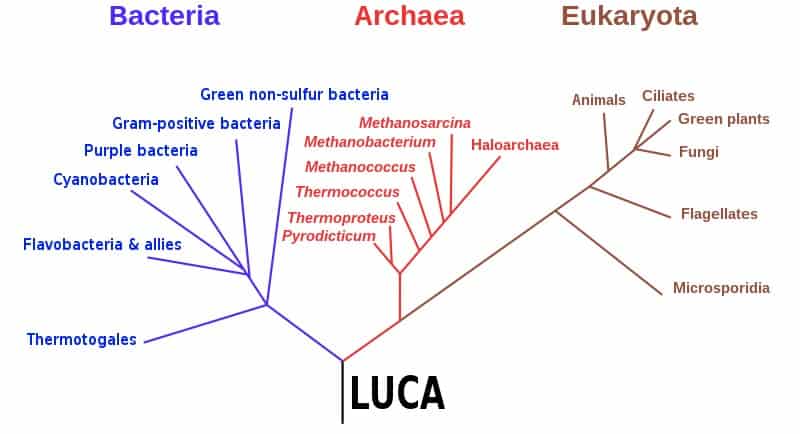
This phylogenetic tree of life depicts the Last Universal Common Ancestor, or LUCA.
©Chiswick Chap/Wikimedia Commons – License
LUCA stands for “Last Universal Common Ancestor,” and it refers to the single-celled organism that gave birth to all life that has existed on the planet. This ancestor was the first capable of transmitting copied DNA to progeny. LUCA is believed to have existed up to 3.8 billion years ago.
Microbial evidence found in rocks determined the date. While actual microbes from this early period have not been preserved, their biological functions may have affected the rocks around them. If these rock abnormalities result from microbes, then LUCA must have directly preceded them.
This is the only item on this list that isn’t tangible. It is still worth mentioning, however, since the evidence pointing toward LUCA’s existence is some of the oldest information obtainable about the origins of life. This is why it’s on our list of the 7 oldest things on earth.
3. Zircon Crystals: Oldest Mineral on Earth

The zircon crystals in the Jack Hills in Australia are the oldest minerals on Earth.
©alpinenature/Shutterstock.com
The oldest mineral on the planet is small filamentary crystals called zircons from the Jack Hills of Western Australia. While you can find zircons around the globe, the zircons in this specific location are the oldest. They are around 4.3 billion years old, making them the oldest mineral on the planet.
These zircon crystals were produced during one of the earliest periods on the planet. Their presence and age are helping scientists better understand the development of plate tectonics. Without plate tectonics, no life could have evolved on earth.
These crystals are forged in specific magma conditions present on the planet billions of years ago. Inferences can be made about the nature of plate tectonics at the time. The planet was only around 200 million years old when these zircon crystals were created.
2. Murchison Meteorite: Oldest Dust on Earth
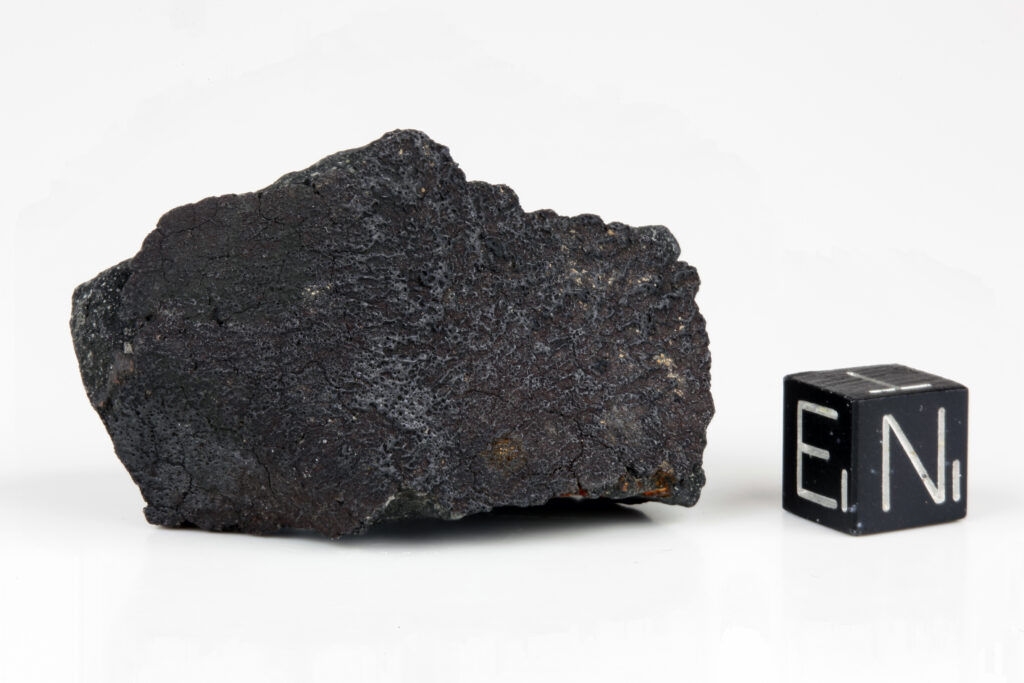
With dust that pre-dates the creation of the solar system, the Murchison meteorite is quite old.
©Matteo Chinellato/Shutterstock.com
The Murchison meteorite landed in 1969 in Australia. It contains dust that pre-dates the creation of the solar system.
This meteorite’s bits of stardust originate from the cloud that formed the solar system. This cloud is commonly referred to as the solar nebula. These grains of dust are smaller than one human red blood cell.
When condensed with hydrogen, this dust formed the basis of our solar system. Continual compression led to the creation of gravitational forces, which continued to shape the planets and sun.
1. Hydrogen, Helium, and Lithium Atoms: Oldest Elements on Earth
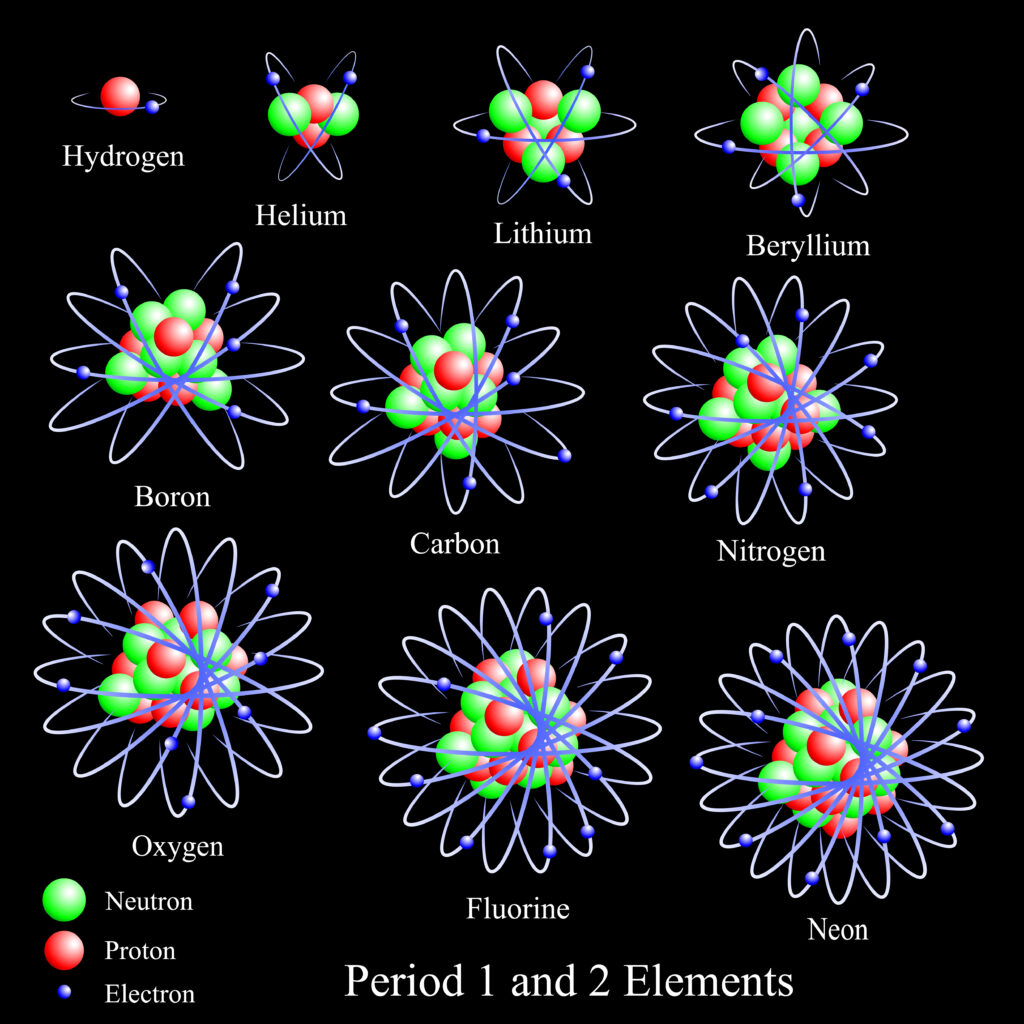
Hydrogen, helium, and lithium elements are the oldest elements on Earth.
©Mike Price/Shutterstock.com
The last of our list, hydrogen is the most abundant of the three Earth elements that emerged during the Big Bang. The other two elements are lithium and helium.
This makes hydrogen, helium, and lithium a trio of elements as old as time itself. All other elements are a result of the alteration of these formative elements. For example, supernovas and other drastically energetic events can permanently alter an atom’s makeup.
Any free lithium, hydrogen, and helium atoms trapped in the earth’s core are most likely from the Big Bang. It’s extremely rare for these elements to occur naturally unbonded, so only extreme environments like the earth’s core can sustain these unaltered atoms.
While there aren’t many free hydrogen atoms on the planet outside of the core, any bonded hydrogen molecule is still related to the dawn of time. Water, which contains two hydrogen atoms, wouldn’t be possible without the oldest element in the universe. Lithium and helium have similar stories.
Summary Of The 7 Oldest Things On The Planet
| Rank | Item | Age |
|---|---|---|
| 7 | Omo Remains: Oldest Human Fossils | 233,333 years old |
| 6 | Nyasasaurus Parringtoni Fossil: Oldest Dinosaur Fossil | 243 million years ago |
| 5 | Makhonjwa Mountains: Oldest Mountain Range on Earth | 3.6 billion years ago |
| 4 | LUCA: Oldest Common Ancestor | up to 3.8 billion years ago |
| 3 | Zircon Crystals: Oldest Mineral on Earth | 4.3 billion years ago |
| 2 | Murchison Meteorite: Oldest Dust on Earth | Pre-dates the creation of the solar system |
| 1 | Hydrogen, Helium, and Lithium Atoms: Oldest Elements on Earth | As old as time |
The photo featured at the top of this post is © iStock.com/Marieke Peche
Thank you for reading! Have some feedback for us? Contact the AZ Animals editorial team.






